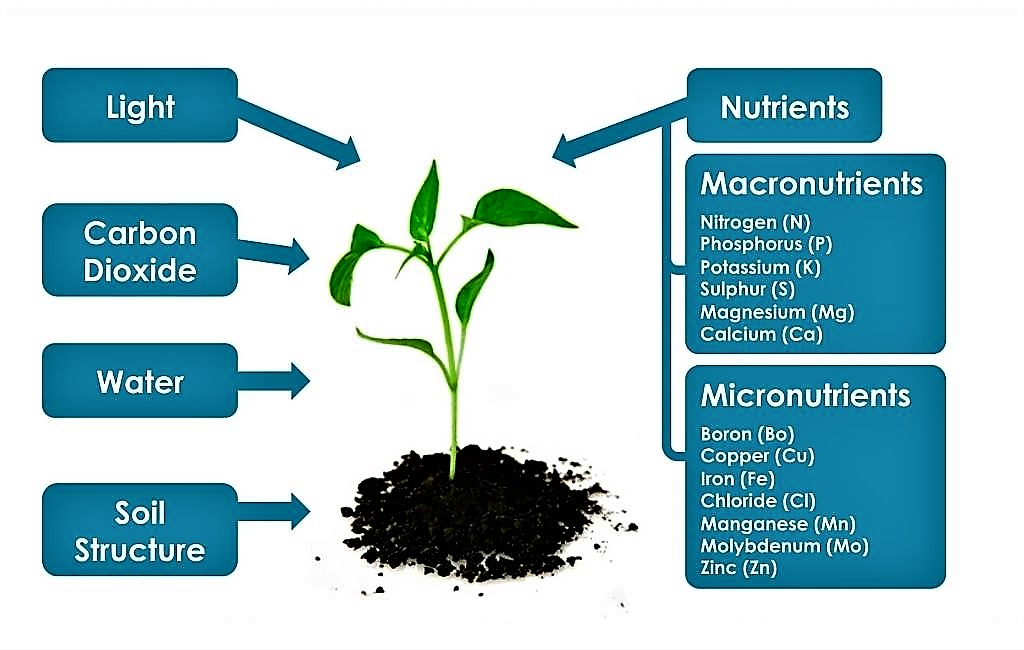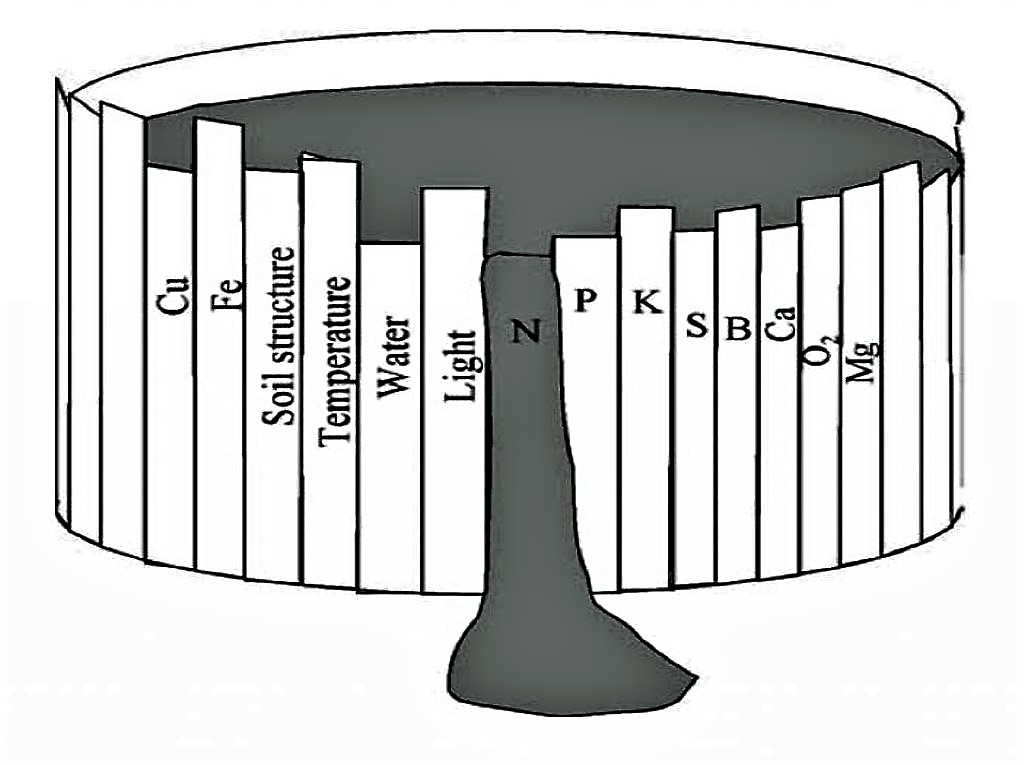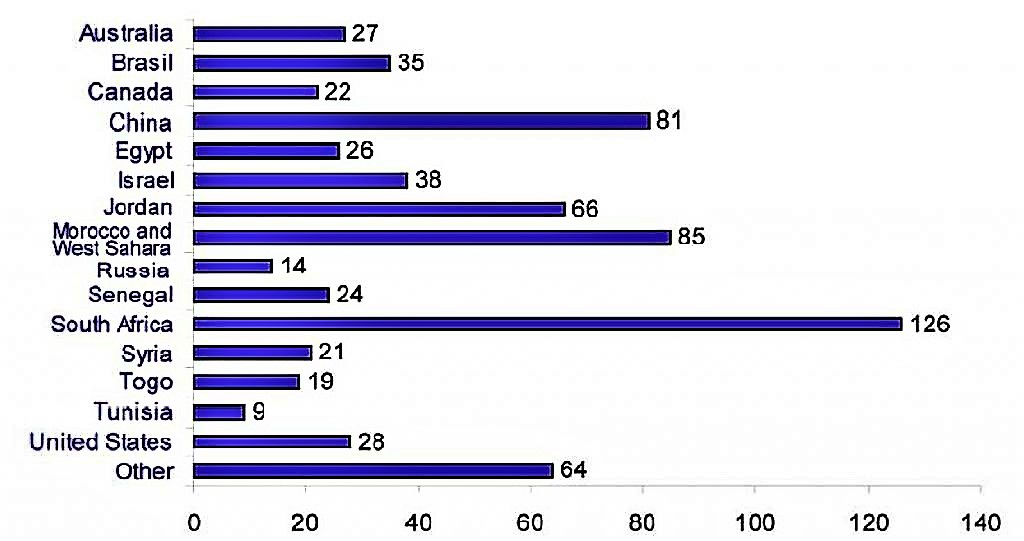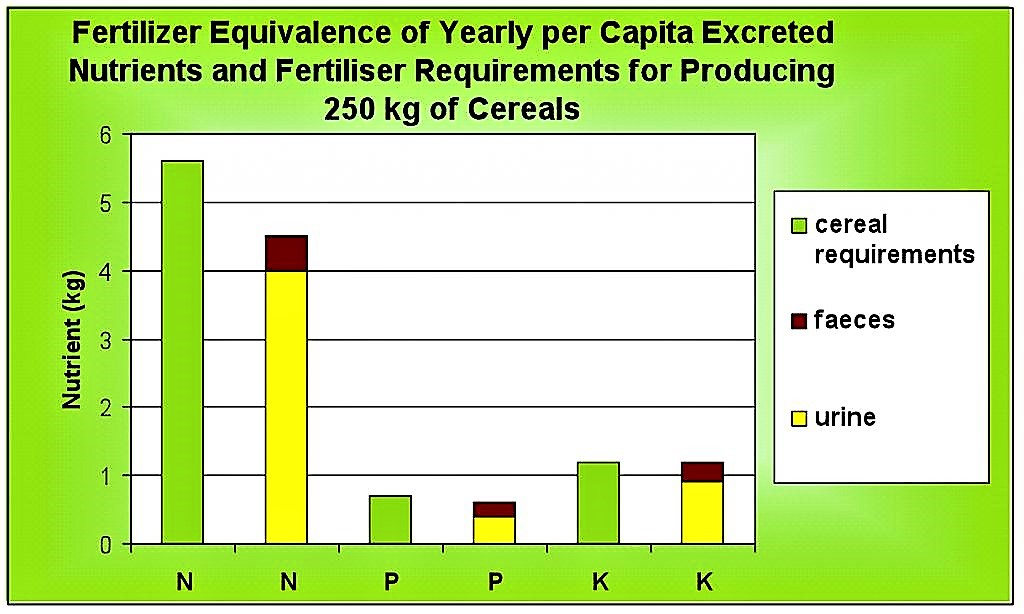Executive Summary
Like other living organisms, plants have basic needs for their survival and growth. Apart from the easily available carbon dioxide (CO2) and light, plants require primarily water, adequate soil structure and nutrients for their growth. Wastewater and excreta (urine and faeces), together with animal manure and composted solid waste, have the potential to cover these needs to grow crops and for produce food. This allows minimising the application of freshwater resources or synthetic fertilisers (e.g. mined N, P or K). Natural fertiliser derived from wastewater and excreta not only contain large amounts of these nutrients, but also organic matter and a variety of complementary nutrients (i.e. micronutrients) and can therefore serve as important sources for soil amelioration.
Introduction

The requirements for plant growth include light, water, an adequate soil structure for roots to grow in and nutrients. Elements essential for the growth of plants are called nutrients. The nutrients used in the largest amounts are the non-mineral elements, i.e. carbon, hydrogen and oxygen. These elements are mainly taken up as carbon dioxide (CO2) from the air, and water (H2O) by the roots (see also the nutrient cycle).

Increasing the supply of light, carbon dioxide, water and mineral nutrients from the deficiency range increases the growth rate and crop yields.
However, fertilisation increases crop yield only if the plant nutrients supplied is one of the most limiting growth factors. No yield increase is to be expected when fertilising crops that are mainly limited by factors other than nutrient supply, e.g. water, light, pH, salinity, light or temperature, etc. (JOENSSEN et al. 2004).
Nutrients
Nutrients can be divided into the two categories: macro nutrients and micro nutrients. The six elements normally classified as macro nutrients are: nitrogen (N), phosphorus (P), potassium (K), sulphur (S), calcium (Ca) and magnesium (Mg). The plant roots mainly take up these nutrients in ionic form.
N is the element that plants require in greatest amounts and frequently the most limiting nutrient for plant growth. The use of N is usually higher than the total use of the other macro nutrients and micro nutrients together. N is essential to the photosynthesis and healthy cell growth and reproduction. It is vital in producing chlorophyll (which gives the leaves good green colour) and amino acids. It also promotes shoot and leaf growth.The plant takes up N as ions of nitrate (NO3-) and ammonium (NH4+). The main natural sources in soil of plant available N are degradation of organic matter and N fixation by microorganisms living in symbiosis with the roots of legumes.
P is taken up by the plants in the form of phosphate ions (at pH 5- to 7 mainly as HPO42-and H2PO4-). P is required for cell growth and plant reproduction, for the conversion of light energy to chemical energy during photosynthesis and is crucial for flower and fruit formation. Too little phosphorus can result in stunting, but too much can cause bitter flavour in crops. Symptoms of phosphorus deficiency are often mistakenly attributed to viral diseases. The supply of plant-available P comes from dissolution of soluble phosphates in the soil and from mineralisation of organic matter. P is not easy to dissolve in water, so plants often miss P if the level of organic matter in the soil is low.
K can be taken up in large amounts by many crops. High water solubility and natural K-content in the soil often results in a good supply of plant-available K, e.g. of K+. However, crops such as vegetables need large amounts of K and therefore additional K fertilisation may improve plant growth. K enhances plant health, reduces pest sensitivity, increases share of vitamins, proteins and oil in the plants. It increases drought tolerance and helps building up fibre in the plants.
S is also highly water-soluble and most crops need it in somewhat smaller amounts than P. S is a component of amino acids and proteins and important for plant growth.Yearly fertilisation with S is often needed. S is taken up as SO42+.
The addition of Ca and Mg is often not needed since soils with acceptable pH contain enough Ca and Mg. The most important macro nutrients that need to be added frequently during crop production are therefore N, P, K and S.
Micro nutrients are as essential for plant growth as macro nutrients, but are taken up in fairly small (micro) amounts. The elements normally considered micro nutrients are boron (B), copper (Cu), iron (Fe), chloride (Cl), manganese (Mn), molybdenum (Mo) and zinc (Zn) (FRAUSTO DA SILVA 1997 and MARSCHNER 1997). Most of the micro nutrients are needed for the formation of different enzymes. These micro nutrients are normally available in sufficient quantities through initial soil content and mineralisation of organic material. Only in special circumstances does scarcity of micro nutrients limit plant growth. When human excreta or manure are used as a fertiliser, the risk for such deficiency is minimal as excreta contain all micro nutrients necessary for plant growth.
Organic Matter
In addition to the mere nutrients, plants also need a supporting soil structure for their roots to grow in. A high organic matter content in the soil improves the soil structure and supports diverse microbial community in the soil.It provides for airy crumbs and pore space in which particles of sand, clay and silt are held together allowing microorganisms and insects to feed on and to easily decay the nutrients in the soil and making them plant available. It also improves the water and nutrient retention capacity and the capacity to buffer pH and pollutants like heavy metals by holding them in the soil. Organic matter furthermore moderates the soil temperature and prevents the soil from heating up or cooling down to fast. Due to the improved water and nutrient withholding capacity, the vulnerability to environmental shocks such as droughts and floods is considerably reduced (see also soil degradation).
Fertilisation
Fertilisation is a way to provide plants with nutrients that are missing in the soil. One can use either organic or inorganic (synthetic) fertilisers. Inorganic fertilisers provide the bulk of plant nutrients needed, and are produced artificially, while organic fertilisers (such as compost, treated faeces or urine) are produced by natural processes, and have the capacity to improve the physical, chemical and biological properties of the soil (e.g. its organic matter content, pH-value, texture, nutrient and water-retention capacity).
In terms of natural resources that are needed, food production requires mainly water, arable land that steadily supplies nutrients or synthetic fertiliser and the organic substrate for plant growth. These vital resources are often distributed unevenly around the world and many soils have been depleted or damaged by inappropriate agricultural practices. At present the earth is losing 25 billion tons of nutrient rich topsoil annually (WWI 2005), which results in considerably reduced productivity, and hence decreased food security. According to a study by the United Nations Environmental Programme (UNEP), some 2 billion hectares of vegetated land have been degraded since 1945 globally, which is equivalent to 17% of the worldwide productively used land (see also soil degradation).

In former centuries, the loss of soil fertility, which is inherent to all agricultural systems, has been solely compensated through the application of animal manure, human excreta, and compost or through long fallow periods.
Today, in extensive agriculture, compensation of soil degradation is often not practised. When inorganic fertilisers were introduced in the mid 19th century, fertilisation with industrially produced macro- (and micro-) nutrients became the prevailing and most common practice to meet key nutrient requirements for food production.
Inorganic fertiliser, i.e. mineral, synthetic or artificial fertilisers, refers most often to the macro nutrients P and K gained through mining of phosphate or potash rocks or the recovering of N form air.

However, these inorganic fertilisers are expensive to produce because their production relies on the availability of fuel (e.g. 1 litre of cryogenic distillation used to recover N uses approximately 1 litre of petrol oil). Furthermore, artificial fertilisers are bound to the world market controlled by large and powerful multi-national companies. Furthermore, mainly P and K reserves in rocks are predicted to be depleted in the next hundred years, if their exploitation follows the same trend as to day. The use of synthetic fertiliser is therefore not a reasonable solution for the majority of small-scale farmers in developing countries. In addition, the often inappropriate transporting infrastructure, particularly to remote areas, makes these commercial fertilisers even more expensive then their actual market value. Apart from that, industrial fertiliser cannot replace the loss of organic matter, microorganisms and many micro nutrients equally at stake in degraded topsoils (because they generally contain only some macro nutrients, i.e. NPK) and despite of the fertiliser use a negative nutrient balance in most soils is observed.

Wastewater and excreta, together with animal manure and composted solid waste have the potential to cover plant nutrient requirement with minimal or no application of synthetic fertilisers or freshwater resources. They can serve as important sources for soil amelioration, as they deliver all relevant nutrients and water needed for plant growth, as well as organic matter. Indeed, the aspect of growing food and achieving food security is historically strongly linked with the idea of reusing liquid and solid waste from households in agriculture. Throughout centuries, human and animal excreta played a crucial role in maintaining soil fertility and providing essential plant nutrients for food production. If agriculture is to be sustainable, these concepts should be revived.
See also (e.g.):
- Use of urine and faeces in agriculture (see this category in reuse and recharge section)
- Reuse of wastewater (see both reuse categories in reuse and recharge section)
- Linking up sustainable sanitation water management and agriculture
Closing the loop on phosphorus
The Biological Chemistry of the Elements - The Inorganic Chemistry of Life
Introduction to Organic Plant Nutrition
Guidelines on the Use of Urine and Faeces in Crop Production
These guidelines provide a thorough background on the use of urine (and faeces) for agricultural purposes. Aspects discussed are requirements for plant growth, nutrients in excreta, hygiene aspects, and recommendations for cultivation. It provides detailed guidance on the use of urine for purposes.
JOENSSON, H. RICHERT, A. VINNERAAS, B. SALOMON, E. (2004): Guidelines on the Use of Urine and Faeces in Crop Production. (= EcoSanRes Publications Series , 2004 ). Stockholm: EcoSanRes URL [Accessed: 17.04.2012]Mineral Nutrition of Higher Plants
Melbourne principles for sustainable cities
Food security and productive sanitation systems
The factsheet describes the food security situation especially in light of limited global resources, the role of sustainable sanitation in closing the nutrient loop and increasing productivity, and challenges in implementing productive sanitation systems.
SUSANA (2009): Food security and productive sanitation systems. (= SuSanA fact sheet 05/2009 ). Eschborn: Sustainable Sanitation Alliance (SuSanA) URL [Accessed: 07.05.2019]Ecological sanitation – principles, urban application and challenges
World Watch Report - State of the World 2005. Redefining Global Security
The story of phosphorus: Global food security and food for thought
Modern agriculture is dependent on phosphorus derived from phosphate rock for the fertilization of agricultural fields. Phosphorus is a non-renewable resource and current global reserves may be depleted in 50–100 years. It is widely acknowledged within the fertilizer industry that the quality of remaining phosphate rock is decreasing and production costs are increasing. Yet future access to phosphorus receives little or no international attention. This paper puts forward the case for including long-term phosphorus scarcity on the priority agenda for global food security. Opportunities for recovering phosphorus and reducing demand are also addressed together with institutional challenges.
CORDELL, D. ; DRANGERT, J.O. ; WHITE, S. (2009): The story of phosphorus: Global food security and food for thought. In: Global Environmental Change 19 : , 292-305. URL [Accessed: 10.05.2010]Practical Guidance on the Use of Urine in Crop Production
This practical guideline on the use of urine in agricultural productions gives some background information on basic plant requirements and how they can be met with urine as a liquid fertiliser.
RICHERT, A. GENSCH, R. JOENSSON, H. STENSTROEM, T.A. DAGERSKOG, L. (2010): Practical Guidance on the Use of Urine in Crop Production. (= EcoSanRes Publication Series, Report No. 2010-1 ). Stockholm: Stockholm Environment Institute (SEI) URL [Accessed: 26.05.2019]Urine as Liquid Fertilizer in Agricultural Production in the Philippines
This field guide has been developed to accommodate the ever-increasing demand for more detailed and scientifically backed information on how to use urine in agricultural production. It is intended primarily for practitioners and experts in the water, sanitation, planning, and agriculture sectors, as well as local and national government officials from the various sectors, NGO and individuals interested and working in the field of agriculture and sustainable sanitation in the Philippines and the wider Southeast Asian region.
GENSCH, R. MISO, A. ITSCHON, G. (2011): Urine as Liquid Fertilizer in Agricultural Production in the Philippines. Cagayan de Oro: Sustainable Sanitation Center Xavier University (XU), the Philippine Sustainable Sanitation Knowledge Node, the Philippine Ecosan Network, and the Sustainable Sanitation Alliance (SuSanA) URL [Accessed: 07.05.2019]Plant Nutrition and Soils
This short but comprehensive publication gives an overview on how soil and plant nutrition are interrelated for good plant growth.
CURTIS, N. CHILD, C. (n.y): Plant Nutrition and Soils. Victoria, USA: Victoria University URL [Accessed: 17.04.2012]Requirements for Plant Growth
This reading material published by the Department of Horticulture of the Iowa State University provides information on the principal environmental requirements for plant growth.
ILES, J. (2001): Requirements for Plant Growth. Ames: Department of Horticulture Iowa State University URL [Accessed: 17.04.2012]Guidelines on the Use of Urine and Faeces in Crop Production
These guidelines provide a thorough background on the use of urine (and faeces) for agricultural purposes. Aspects discussed are requirements for plant growth, nutrients in excreta, hygiene aspects, and recommendations for cultivation. It provides detailed guidance on the use of urine for purposes.
JOENSSON, H. RICHERT, A. VINNERAAS, B. SALOMON, E. (2004): Guidelines on the Use of Urine and Faeces in Crop Production. (= EcoSanRes Publications Series , 2004 ). Stockholm: EcoSanRes URL [Accessed: 17.04.2012]Food security and productive sanitation systems
The factsheet describes the food security situation especially in light of limited global resources, the role of sustainable sanitation in closing the nutrient loop and increasing productivity, and challenges in implementing productive sanitation systems.
SUSANA (2009): Food security and productive sanitation systems. (= SuSanA fact sheet 05/2009 ). Eschborn: Sustainable Sanitation Alliance (SuSanA) URL [Accessed: 07.05.2019]http://www.infonet-biovision.org/
This website contains information on plant requirements and organic soil fertility management.
